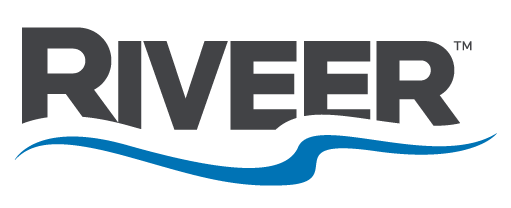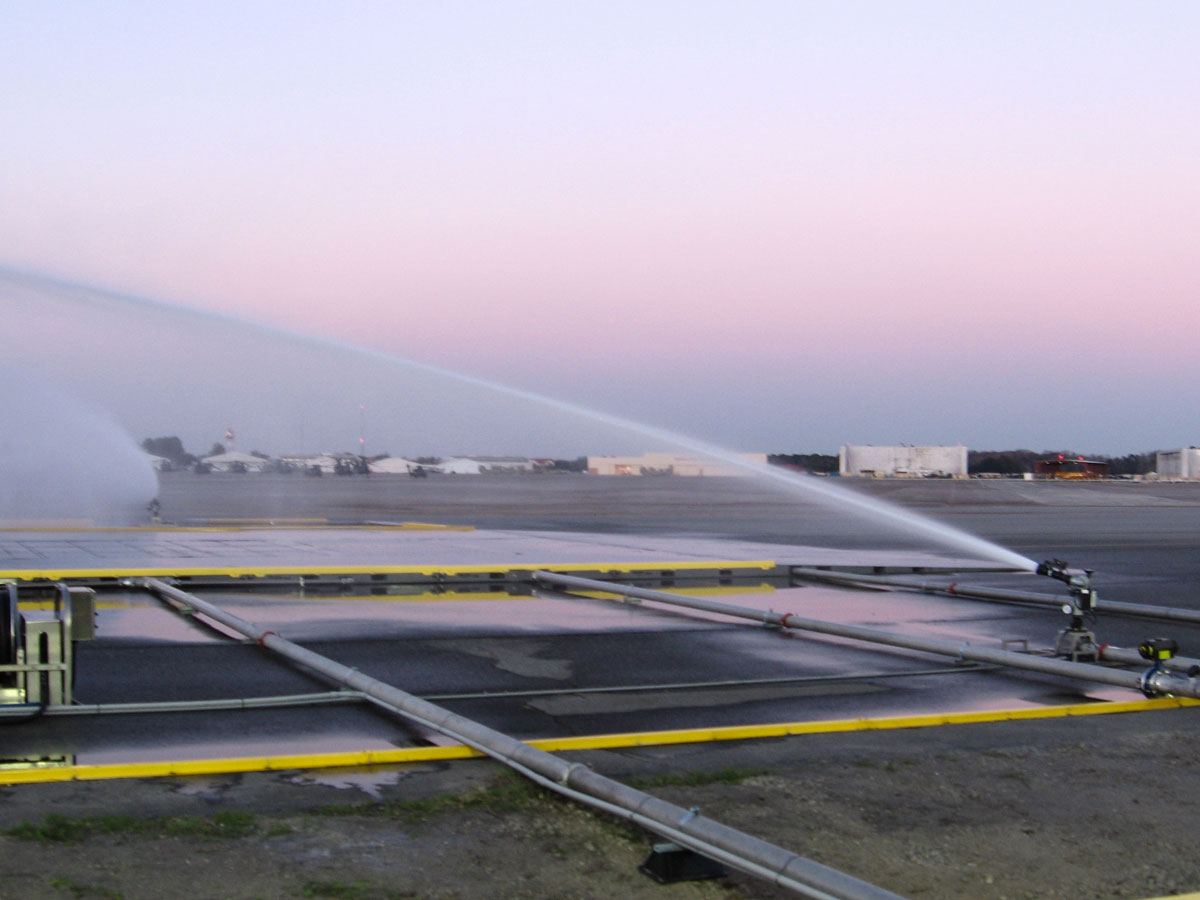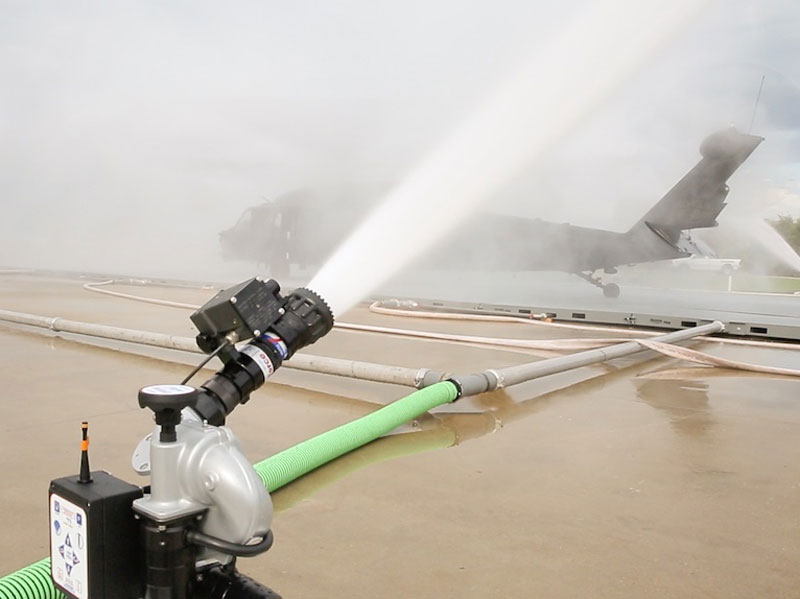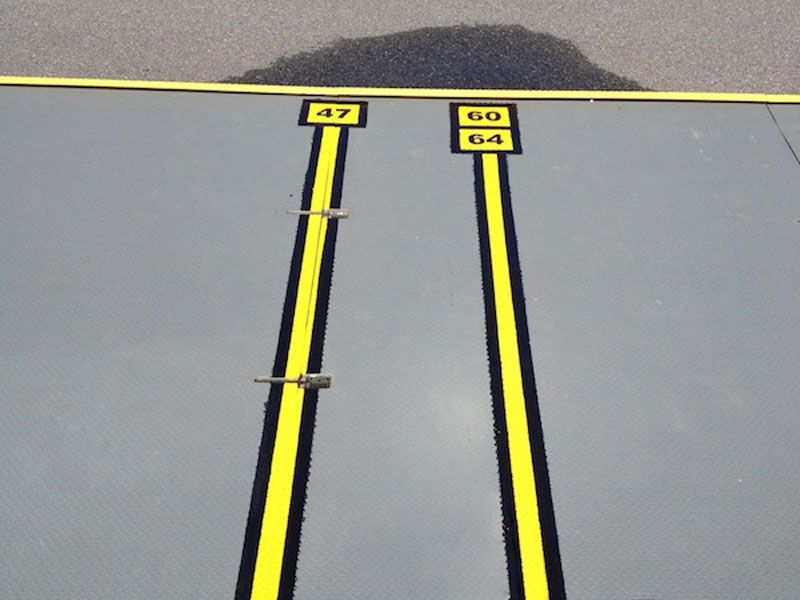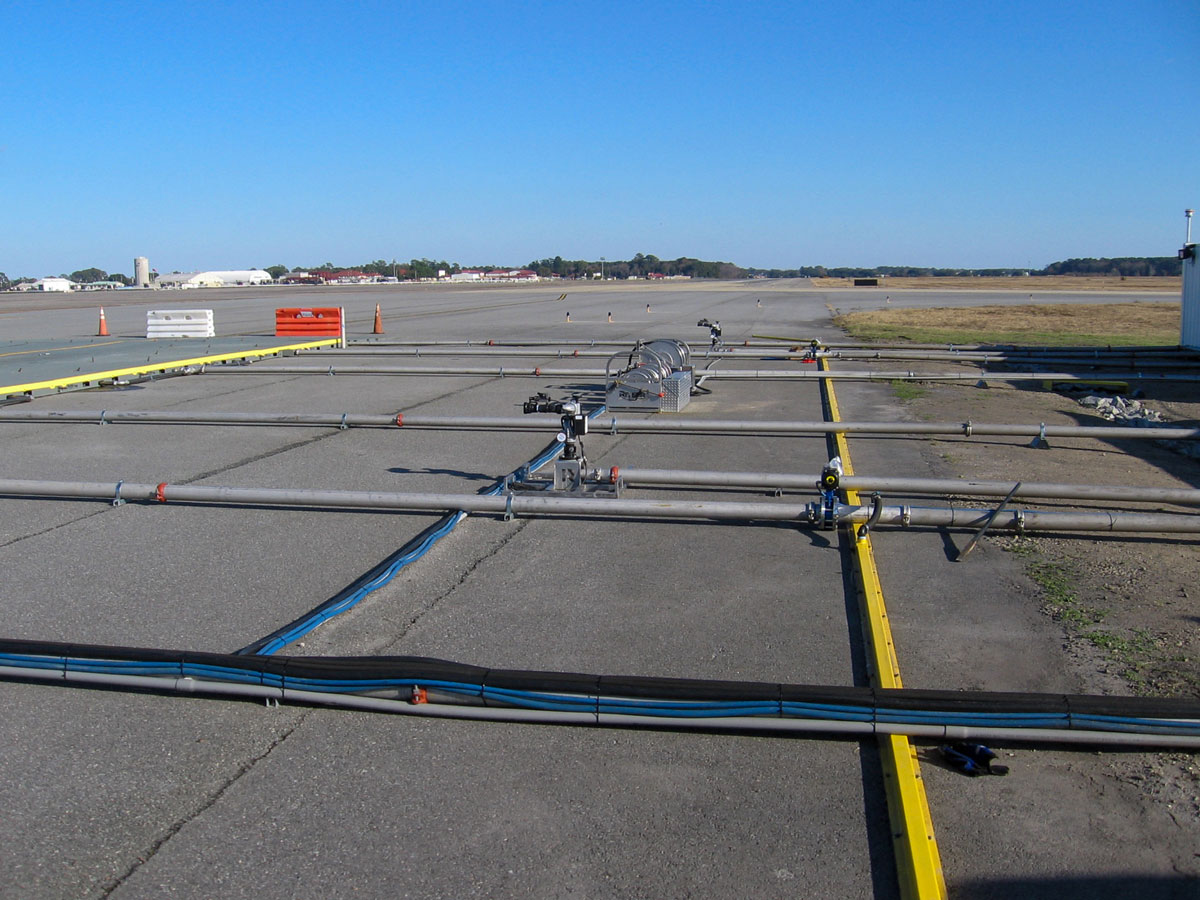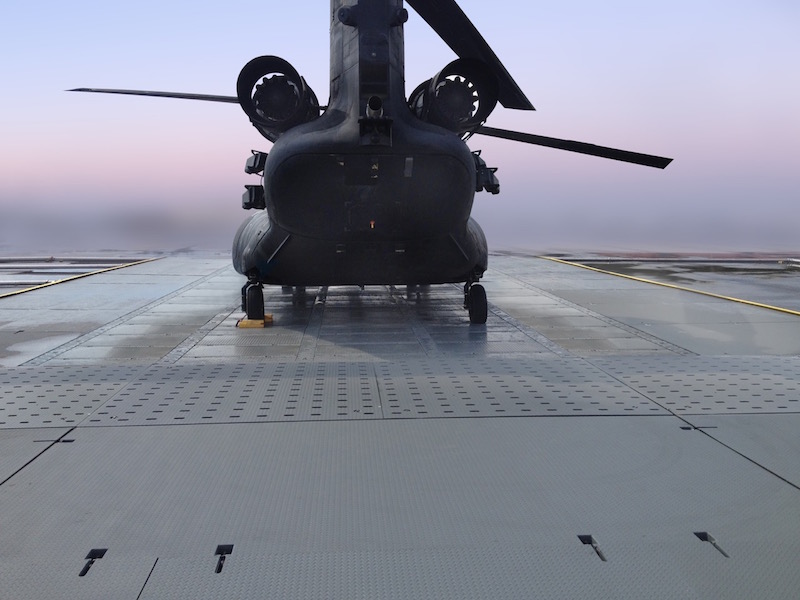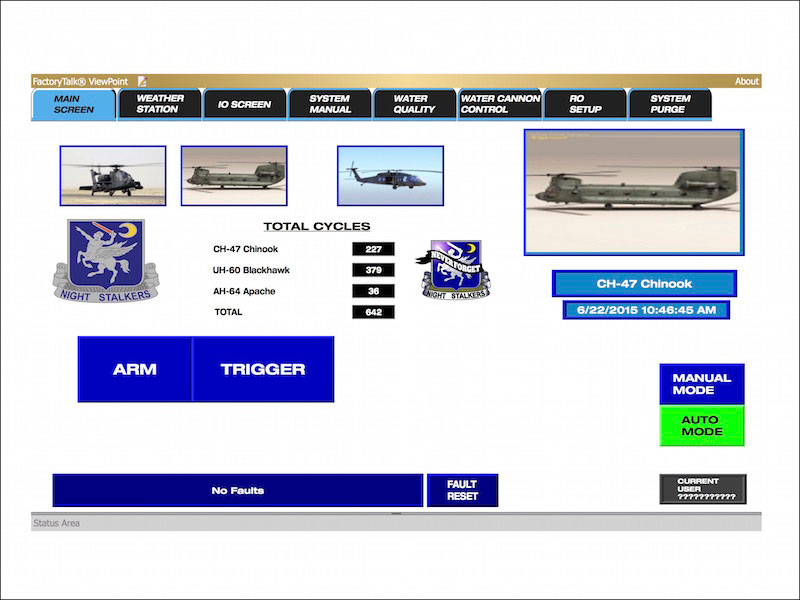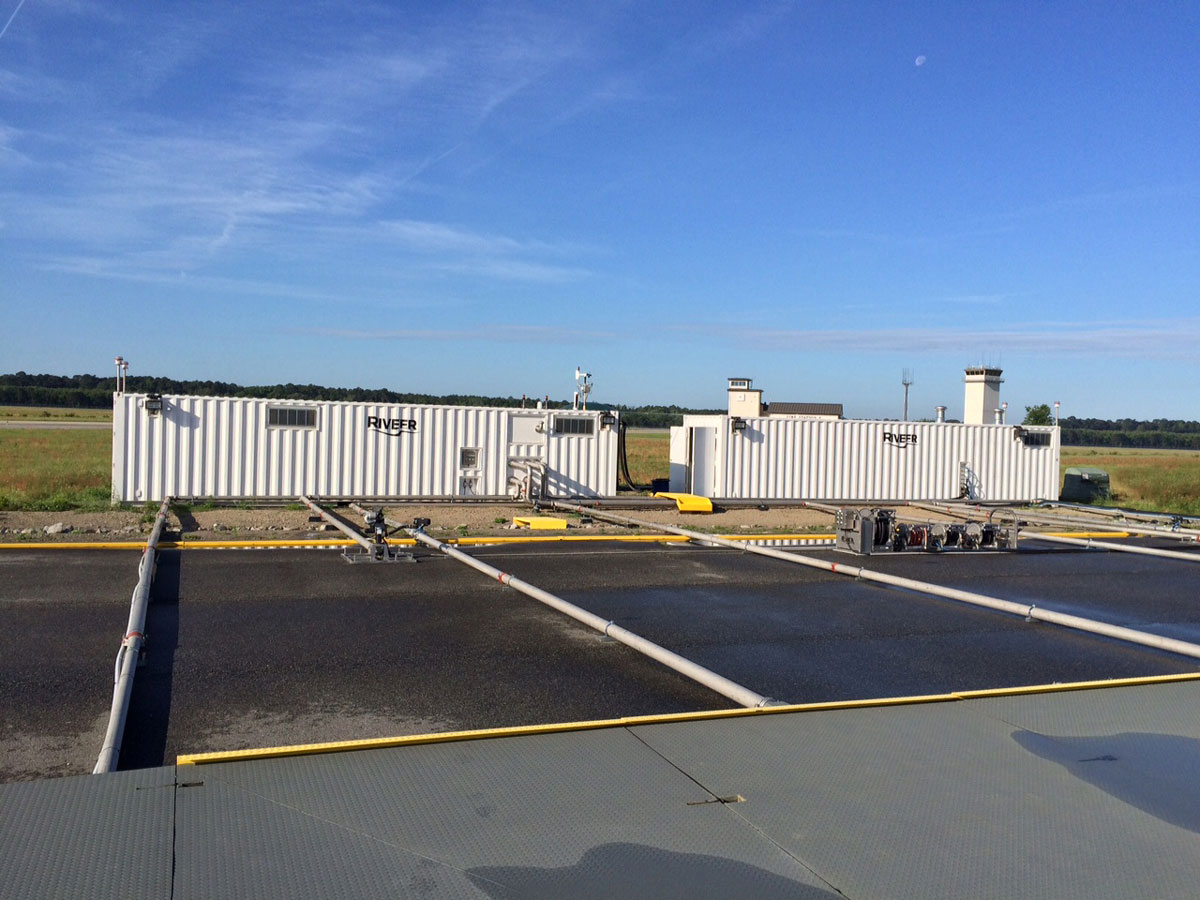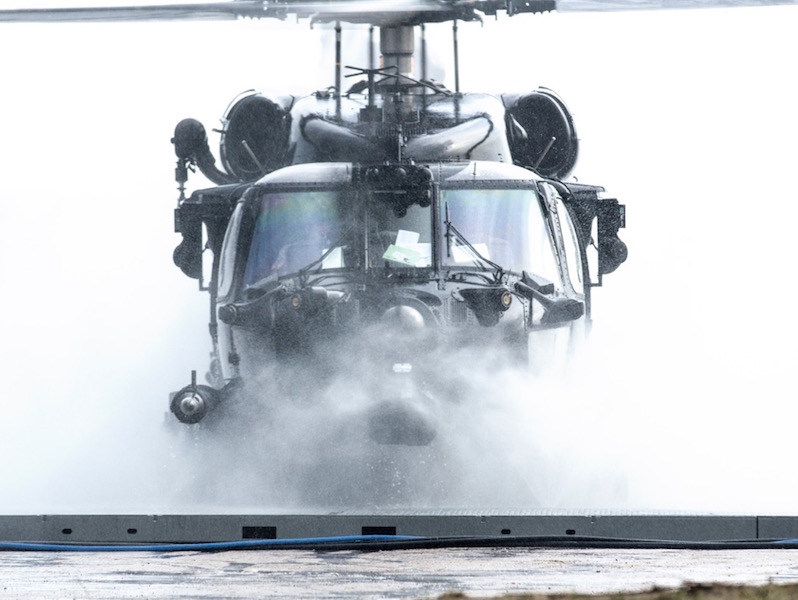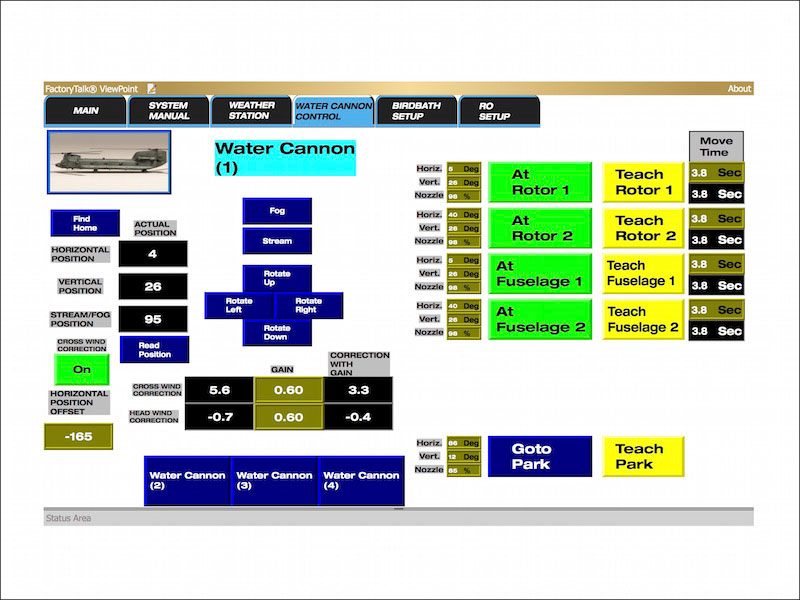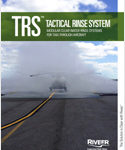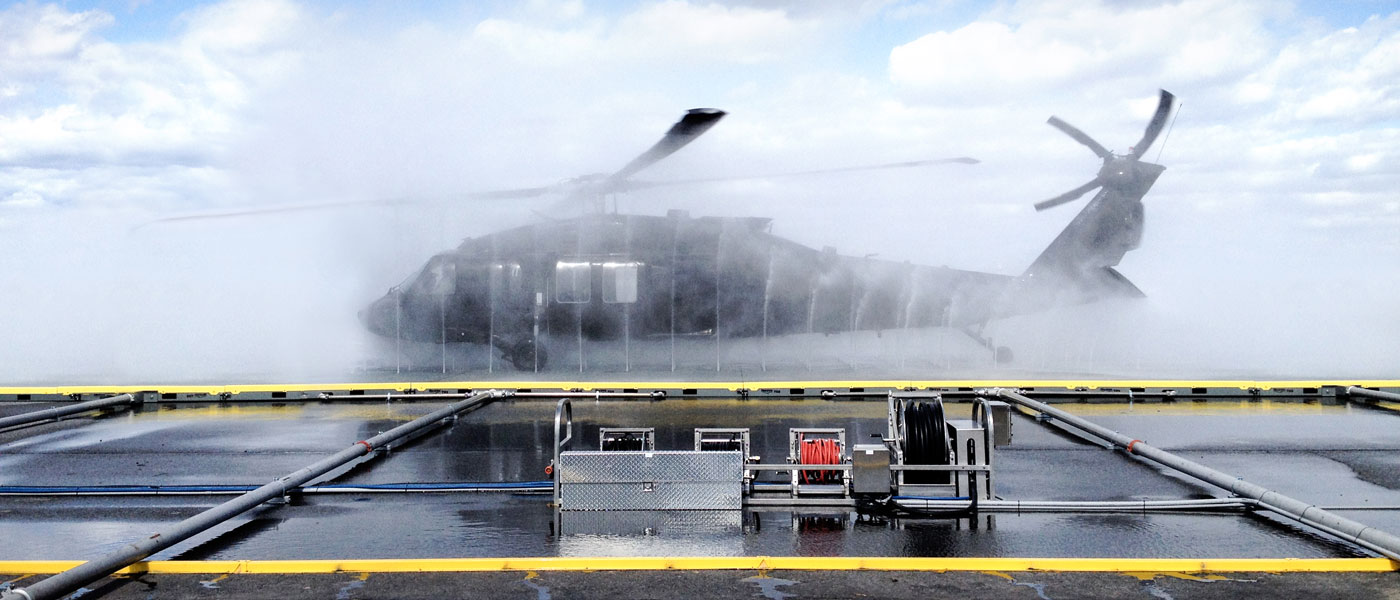
Rinse Aircraft with the Above Grade
Tactical Rinse System (TRS)
Rinse aircraft as they taxi. The Riveer Tactical Rinse System (TRS) is an automatic clear water rinse system for aircraft of virtually every configuration and complexity. The TRS is fully deployable and installed above ground. This saves operators time and money normally used on infrastructure modification and associated site engineering/environmental considerations. The modular configuration consists of a wash rack formed by steel pad sections and ISO containers that hold the complete rinse/wash and filtration system. All you need is electrical power.
Rinse Aircraft and Keep Corrosion from Starting
Mitigating corrosion is critical to aircrew safety. Install the TRS and keep your aircraft out of rework and in the air. At the same time you’re protecting the aircraft, the TRS captures and recycles up to 80% of the water for sustainable operations.
The TRS is a taxi-through system, which allows inline aircraft rinse immediately upon aircraft recovery. Rinse cycle times can be adjusted, depending on size and amount of dust, sand and salt, to accommodate water spray lasting from 30 seconds to 2 minutes. This creates a customized rinse to meet your specific environmental and mission conditions.
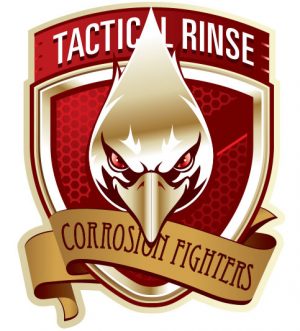
Automatic Rinsing During Taxi-Through
Onboard PAR (Pilot Activated Rinse) technology allows the pilot to activate precision spray nozzles from the cockpit while taxiing onto the rinse pad.
The TRS cycle completes a thorough rinse of dust, salt and corrosive deposits, then reclaims the wash water, filters and reuses it. You can add foaming and washing features to the TRS system.
Designed to Meet Your Needs
Whether used in commercial or military applications, the TRS can be configured to accept specific aircraft and new models. The TRS factors in requirements for flow, reclamation, filtration and wash water discharge, if any. Whether you require rapid deployment or semi-permanent installations, the self-contained, above grade TRS can achieve all types of wash goals and specifications.
The cost-effective system is often assigned at the unit level, for regiments, air groups and squadrons operating near coastal areas or whose exercises take aircraft through salt air or other corrosive environments.
Best practices require aircraft stationed near saltwater need to be clear water-rinsed at least once every 15 days. Furthermore, all aircraft flown at low level (under 3000 ft.) over salt water require rinsing each day.
Field-Proven Engineering and Design
- Fast deployment for virtually immediate operation
- Cockpit activated PAR (Pilot Activated Rinse) allows pilot to select and activate airframe-specific rinse pattern via mic clicks.
- Sprays 800 to 3,000 GPM at a safe-for-aircraft pressures, under 60 PSI for undercarriage and 175 for flight surfaces.
- Automatic operation, no ground crew required, adjusts to type of aircraft and weather conditions
- Utilizes multiple corner-mounted, automatic, oscillating, high-flow monitors with patented spray and flow trajectories and multiple lower deck nozzles ensure a thorough and efficient rinse of all surfaces.
- Quick Rinse Cycle
- Standard footprint for rotary wing or F/A aircraft is 60’L x 80’W x 6’H, with larger pads available
- Patented FOD-proof (Foreign Object Debris) nozzles offer pattern and flow adjustment capabilities.
- TRS patented technology also adjusts spray patterns and flow based on current weather conditions
Water Filtration/Recycling Features
- TRS utilizes the RTSTM high-flow water filtration and recycling unit
- Water utilized to rinse the aircraft is reclaimed and monitored for Total Dissolved Solids (TDS)
- When water TDS reaches a prescribed limit, it’s discharged into a waste tank
- Recycling saves roughly 520 gallons per minute or 1,500,000 gallons of water per year (based on 12 aircraft per day 250 days a year).
